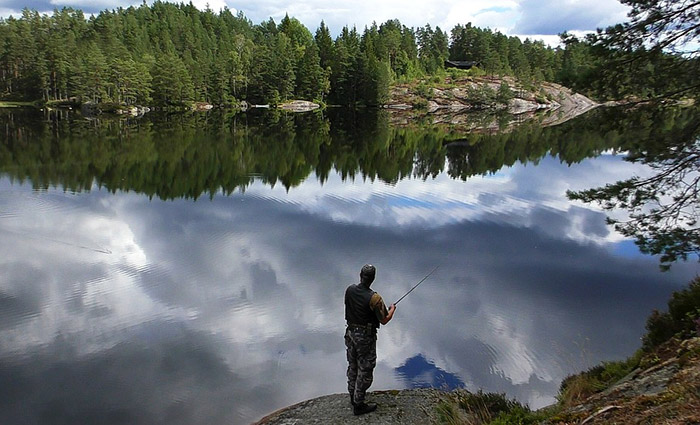Fishing may be your reason for hiking into the high country or it may be just an added bonus. If trout are in your crosshairs, chances are you have a packable rod, reel and a few favorite essential flies or lures that always accompany you while backpacking. But, if catching fish is something you want to try on your next trip or if being successful normally eludes you try these tips:
My favorite backpacking rod is an ultralight spinning rod and reel. I normally practice catch and release trout fishing, but wilderness lakes many times need anglers to keep a few to assist with keeping winter kills to a minimum. A fly rod and reel presents a fun challenge in high altitude lakes, but if putting trout meat on the coals is what I want, an ultralight spin combo is my go-to weapon. How many times have you watched fish rise out in the middle of a lake well out of casting distance of your fly rod? Waders are heavy and mountain lakes are deep so to get to fish out in the lake, use a spinning rod.
[the_ad id=”7373″]
Eagle Claw makes a fine packable rod. I once broke one hoisting a fat Brook Trout over a willow bush. Eagle Claw replaced it no questions asked so since then, that is my brand. There are many choices out there.
You can’t beat the old standbys like Mepp’s spinners and various spoons like the Thomas Lure. In the northern Rocky Mountains, my favorite lure is a gold Jake. Silver is okay, but gold is usually the answer. A good idea is to keep several small spinners and spoons in a plastic container or fly box. Soon, you will find your favorites and stock up on those.
I normally fly fish these days. I just like casting flies to wary trout and don’t care if I catch anything, but if I think I might get tired of eating freeze dried food, I pack the ultralight spinning outfit. To combine the rush of having trout smash a fly and the distance most folks can get with a spinning rod, tie on a fly.
I start with a small swivel tied to the fishing line. Next, take a short piece of line. Line weight isn’t an issue, but I prefer 8 or 12 pound test because it is easier to tie a knot with than lighter 4 or 6 pound test. Thread the line through one of those clear oval shaped bobbers; slip bobber, adjustable bobber or torpedo. Depending on the bobber, you may only have to adjust it or you may have to tie a swivel on both ends to keep the bobber in place. Next, tye your choice of fly behind the bobber about 18-30 inches. The weight of the bobber will enable long casts to trout and help catch fish that are feeding on the surface. Many times, fish hit the bobber as they are attracted to the sphere cutting across the surface. Don’t worry, they will smash the fly too. This rig works for bass and panfish also.
I keep a dozen flies for this purpose in one of those cheap plastic containers available at any fly bin at any fly shop, a prescription bottle or an Altoids breath mint container. Try a grasshopper pattern if you see them leaping around the trail or hear them clacking around you. Keep an attractor pattern like a Royal Wulff handy, a standby like the Elk Hair Caddis as there is usually a hatch on and don’t forget moth patterns, bears are often in the high country in late summer turning over rocks dining on moths. There are as many flies as opinions on which ones to carry, but these are just a few to get started. They add no weight to your pack and take up very little space. In fact the whole box of flies, spinners and swivels will be unnoticeable until time to unpack them. A coffee can or actual small plastic tackle box will hold everything; fishing line, lures, flies, fingernail clippers for nipping line and hemostats for removing well hooked fish. Many packable rods come with a case or you can make one out of a piece of PVC pipe available by the foot at your hardware store. Put a fixed cap at one end and a screw cap on the other.
Cast out into the lake in a clockwise or counter clockwise pattern to avoid casting in the same spot unless you have a strike then definitely try that spot again! Using a spinning rod with this aforementioned fly rig will give you an arsenal to catch finicky trout when they are feeding on the surface. Then, build a fire and with hot gray coals, set fish directly on the bed of coals, no need for packing aluminum foil. Then rest easy being connected to all those who traveled before you wildly feeding of the land with the tools at hand. Tight lines!

